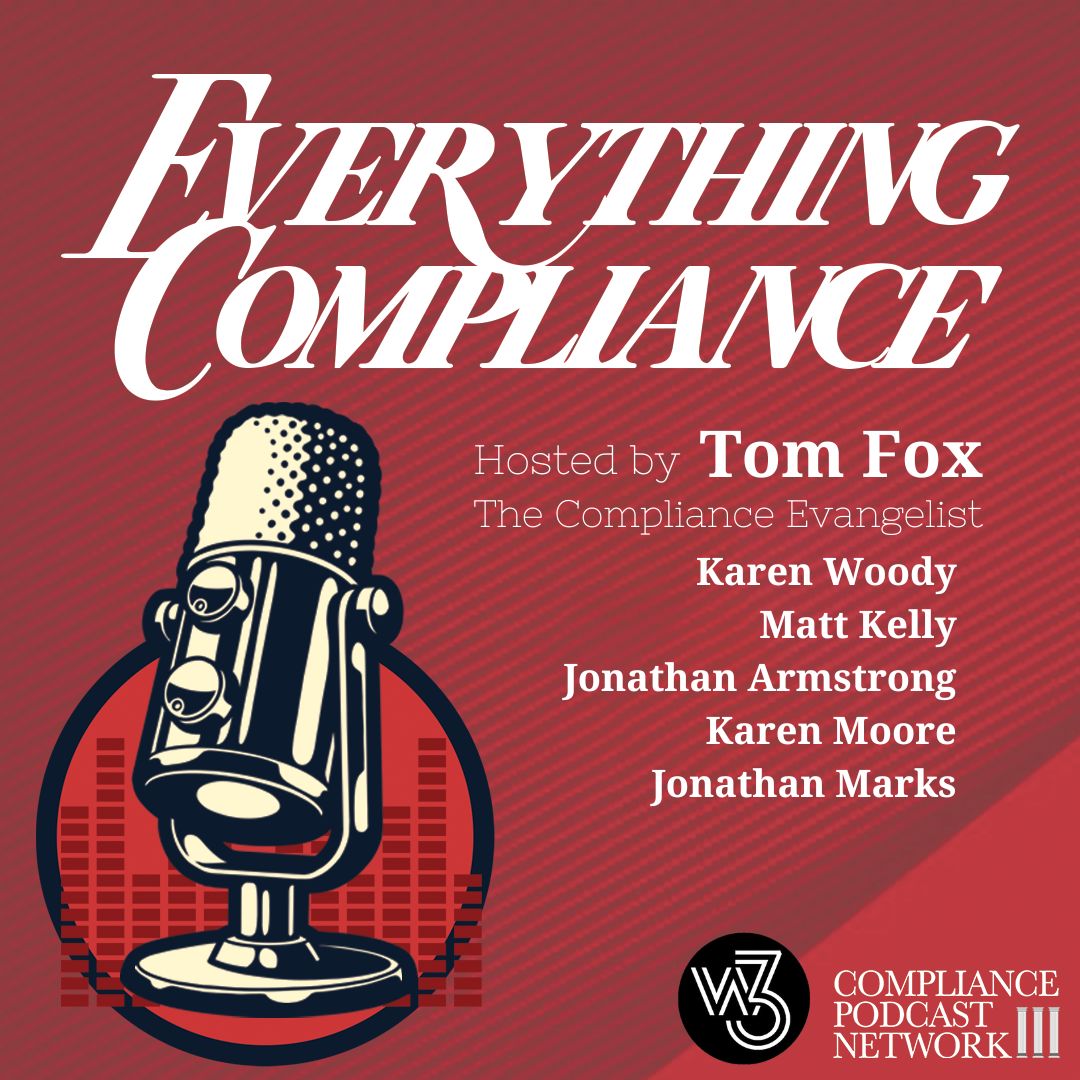Sherlock Holmes, the master of deduction, seldom worked without Dr. Watson. Yet in The Adventure of the Lion’s Mane, Holmes takes center stage in a quiet coastal town, solving a case that presents no apparent suspects, no human culprit, and a mystery rooted in the natural world. For corporate compliance professionals, this unusual story offers rich lessons about vigilance, adaptability, and the importance of robust investigative techniques. The story is unusual for several reasons, including Holmes’s first-person narrative. Also, the case involves an antagonist from the natural world instead of the human world.
Equally interesting are the lessons the story can teach the 21st-century compliance professional. Today, I will examine five key compliance lessons from Holmes’s encounter with the lion’s mane jellyfish. For additional information on the story and commentary, check out the podcast Compliance Lessons from The Lion’s Mane on the Compliance Podcast Network.
Unraveling Unseen Threats: The Importance of Root Cause Analysis
In this story, the victim collapses after screaming the cryptic words “The lion’s mane!” while bearing strange, whip-like marks on his body. At first, suspicion falls on human suspects, but Holmes’s methodical approach reveals the true cause: a Cyanea capillata jellyfish, an elusive and deadly natural threat. The case highlights a critical point for compliance professionals: risks may not always appear obvious, and solutions often require digging beneath the surface.
In the compliance world, it is often tempting to stop at the first explanation for misconduct, such as blaming individual employees or focusing on the visible symptoms of an issue. However, failing to identify the root cause leaves your organization vulnerable to repeated compliance failures. Whether dealing with third-party bribery risks, internal fraud, or systemic policy gaps, the Department of Justice has made clear in the 2024 Update to the Evaluation of Corporate Compliance Programs, that a root cause analysis is a cornerstone of effective compliance programs, re-emphasizing the need for both performing a root cause analysis and equally importantly using it to remediate your compliance program. It stated, “A hallmark of a compliance program that works effectively in practice is the extent to which a company can conduct a thoughtful root cause analysis of misconduct and timely and appropriately remediate to address the root causes.”
It stated what additional steps the company has taken “that demonstrate recognition of the seriousness of the misconduct, acceptance of responsibility for it, and implementing measures to reduce the risk of repetition of such misconduct, including measures to identify future risk.” The following questions were then posed:
Root Cause Analysis—What is the company’s root cause analysis of the misconduct at issue? Were any systemic issues identified? Who in the company was involved in making the analysis?
Prior Weaknesses—What controls failed? If policies or procedures should have prohibited the misconduct, were they effectively implemented, and have functions that had ownership of these policies and procedures been held accountable?
Adaptability in Unfamiliar Environments
Holmes’s seaside investigation takes him far from his usual London setting. Without the bustle of Baker Street or Watson’s steady presence, Holmes must rely entirely on his deductive skills and adaptability. This scenario mirrors the modern compliance officer’s challenge of addressing new and unfamiliar risks.
For example, your organization may expand into a new market or pivot its business model, exposing it to unfamiliar regulatory requirements or operational risks. In these situations, compliance professionals must act as business partners, guiding the organization through uncharted waters while ensuring compliance remains a priority.
You should begin with the question of who should perform the remediation; should it be an investigator or an investigative team that was part of the root cause analysis? Jonathan Marks believes the key is both “independence and objectivity.” An investigator or investigative team may be a subject matter expert and “therefore more qualified to get that particular recourse.” Yet, to perform the remediation, the key is to integrate the information developed from the root cause analysis into the solution.
Accounting for External Risks
The lion’s mane jellyfish, a force of nature, represents the kind of external risk that organizations often overlook. External risks, whether from geopolitical shifts, third-party misconduct, or environmental factors, can devastate even the most robust compliance programs if not properly managed.
Consider the recent focus on supply chain risks. An organization may have strong internal controls, but a third-party supplier engaging in unethical practices can still expose it to liability. Therefore, due diligence and ongoing monitoring are essential to an effective compliance program. Some of the key actions you can take include the following:.
Conduct comprehensive third-party due diligence before onboarding suppliers, agents, or contractors; regularly review external risks as part of your enterprise risk management (ERM) program; and implement tools and technologies to monitor external developments in real-time, such as sanctions lists or geopolitical instability.
The Power of Patience and Observation
Holmes’s resolution hinges on his meticulous observation of minor details, marks on the victim’s body, the jellyfish’s natural habitat, and the timeline of events. He doesn’t rush to conclusions or allow others’ assumptions to sway him. Instead, he systematically gathers evidence and applies his knowledge to reach the correct conclusion. This approach underscores the importance of methodical, data-driven investigations for compliance professionals. Whether handling an internal whistleblower complaint or responding to a regulatory inquiry, rushing the process can lead to missed details or flawed conclusions.
You may also have deficiencies in internal controls. Failing to remediate gaps in internal controls “allows additional errors or misconduct to occur and thus could damage the company’s credibility with regulators” by allowing the same or similar conduct to reoccur. Finally, with both the 2024 ECCP and FCPA Corporate Enforcement Policy, the DOJ has added its voice to prior SEC statements that regulators “will focus on what steps the company took upon learning of the misconduct, whether the company immediately stopped the misconduct, and what new and more effective internal controls or procedures the company has adopted or plans to adopt to prevent a recurrence.”
Communication as a Compliance Superpower
One of Holmes’s strengths lies in his ability to explain complex phenomena in a way others can understand. In this story, he demystifies the jellyfish’s deadly nature for the local community, helping them grasp their danger and take appropriate precautions. Communication is equally critical. Whether presenting findings to the board, conducting employee training, or preparing reports for regulators, you must convey complex information clearly and compellingly. The best compliance programs are not just comprehensive; they are understood and embraced by everyone in the organization.
For compliance professionals, there are several actions you can take. First, tailor your communication style to your audience, whether it’s frontline employees, senior leadership, or regulators. Next, use data visualization, case studies, and real-world examples to make your message relatable and memorable. Finally, foster a culture of transparency, ensuring employees feel empowered to ask questions and report concerns without fear of retaliation.
Final Thoughts
The Adventure of the Lion’s Mane is a tale of hidden threats, careful investigation, and the power of critical thinking—qualities that resonate deeply with the compliance profession. Holmes’s success lies in adapting to unfamiliar circumstances, uncovering an unseen danger, and effectively communicating his findings. Compliance officers need these skills to navigate the complex and ever-changing corporate risk landscape.
As you reflect on Holmes’s seaside investigation, consider how his methods can inspire your compliance practices. Are you conducting root-cause analyses with the same rigor? Have you adapted your program to account for external risks? And most importantly, are you equipping your organization with the tools and knowledge to prevent compliance failures before they occur?
By channeling Sherlock Holmes’s spirit of deduction and vigilance, you can strengthen your compliance program and ensure it is prepared to face even the most unexpected challenges. When the next hidden risk emerges, you will be ready to solve the mystery with precision and confidence, just like Sherlock Holmes.









